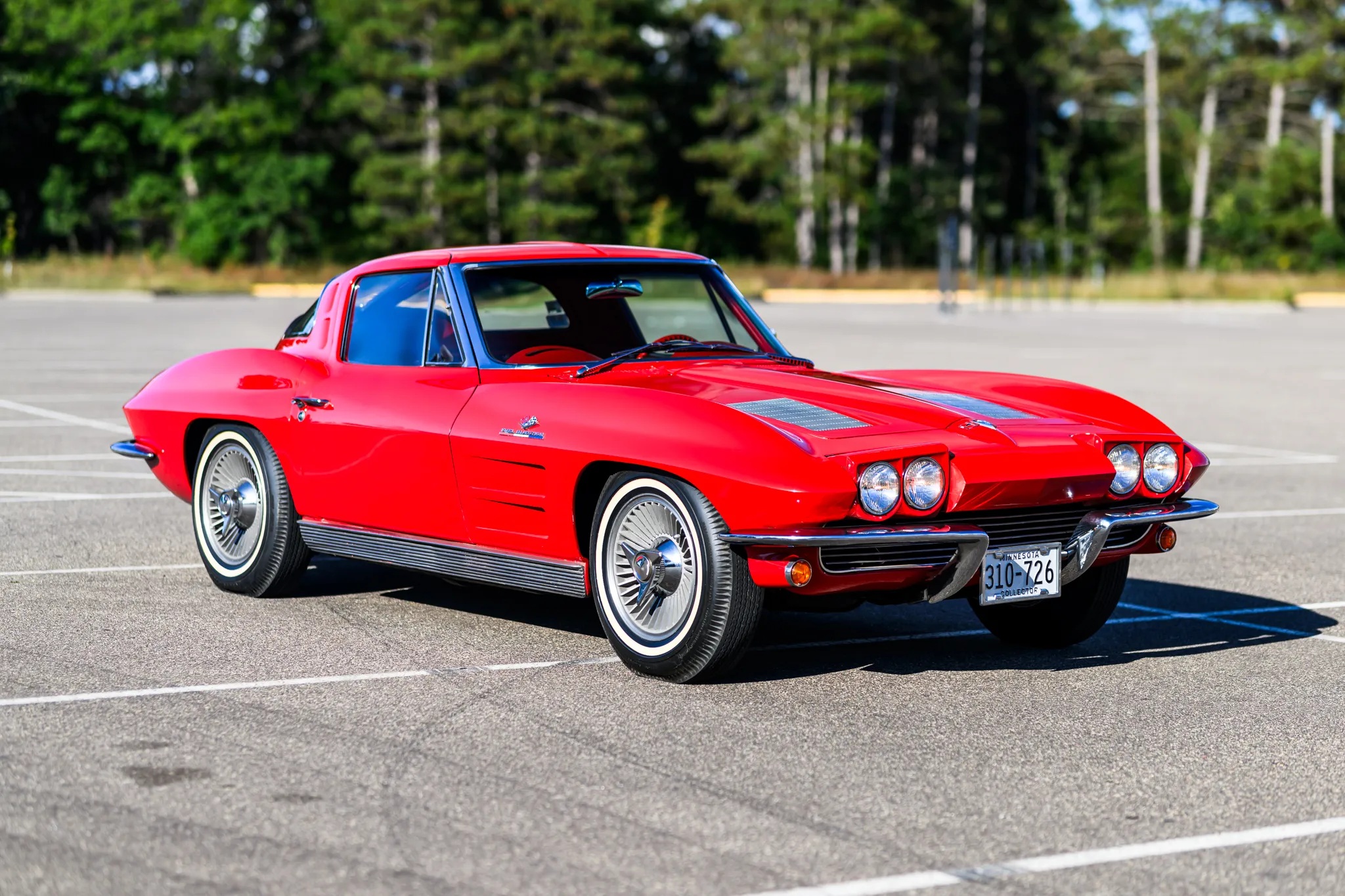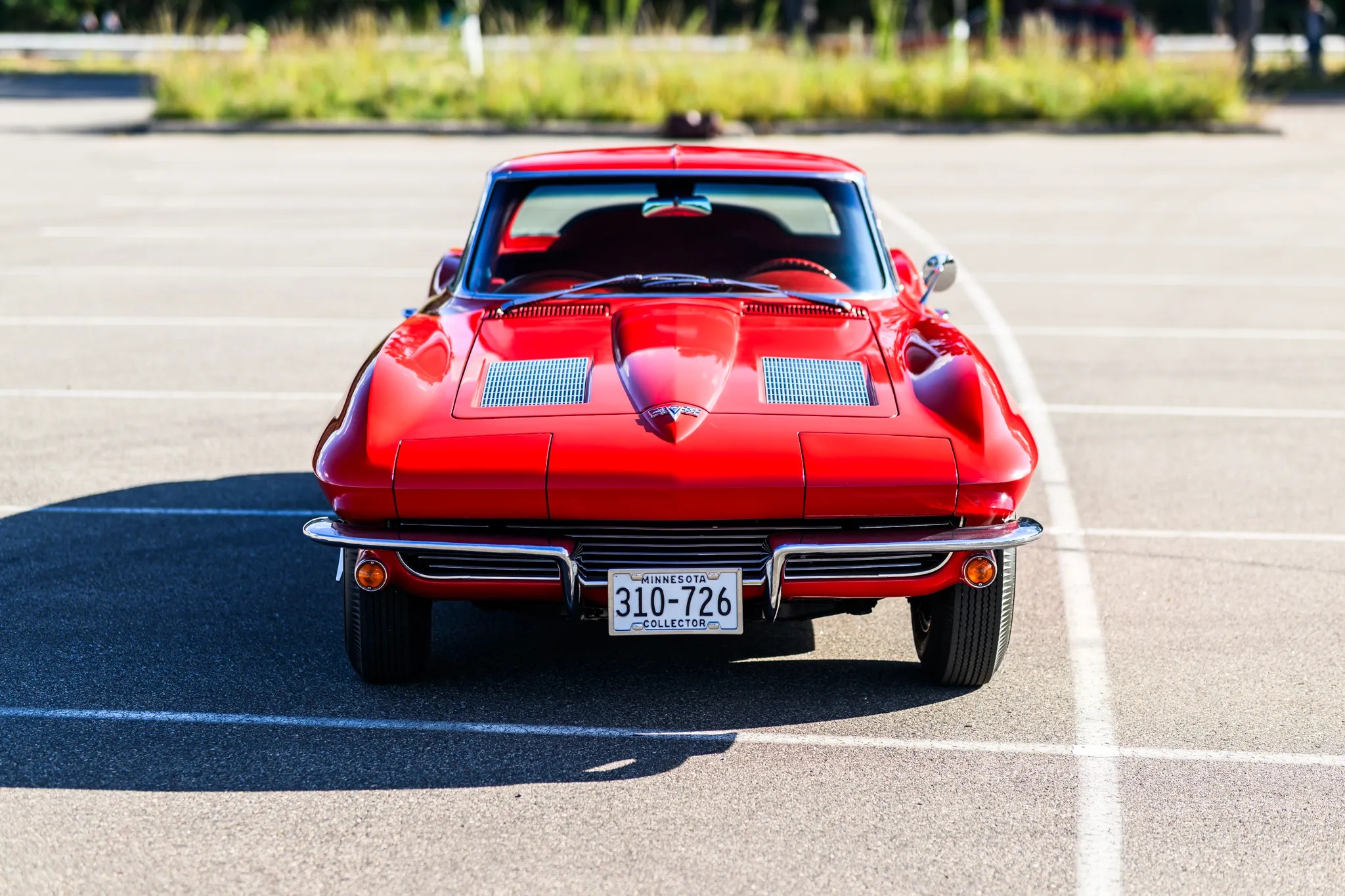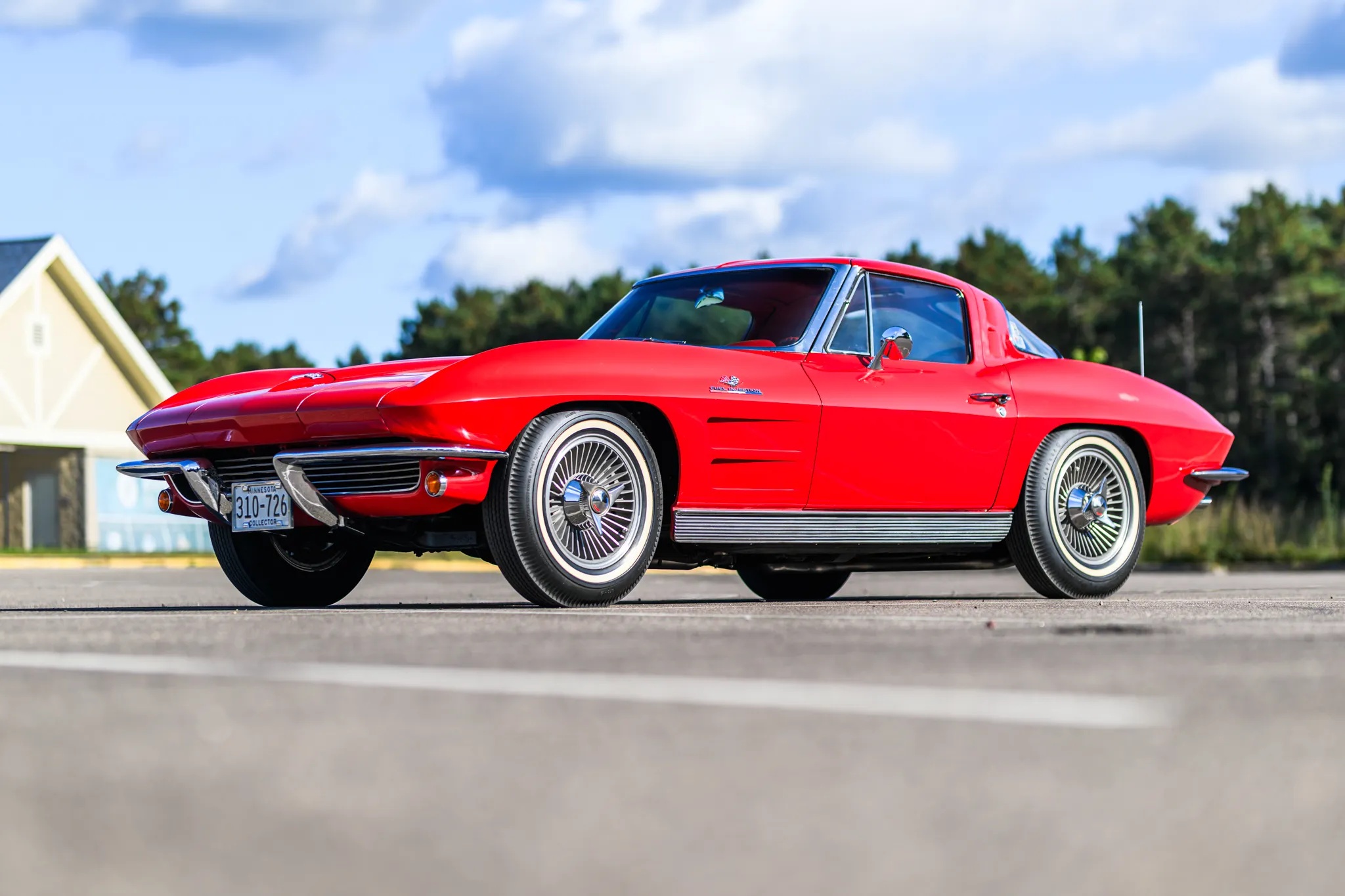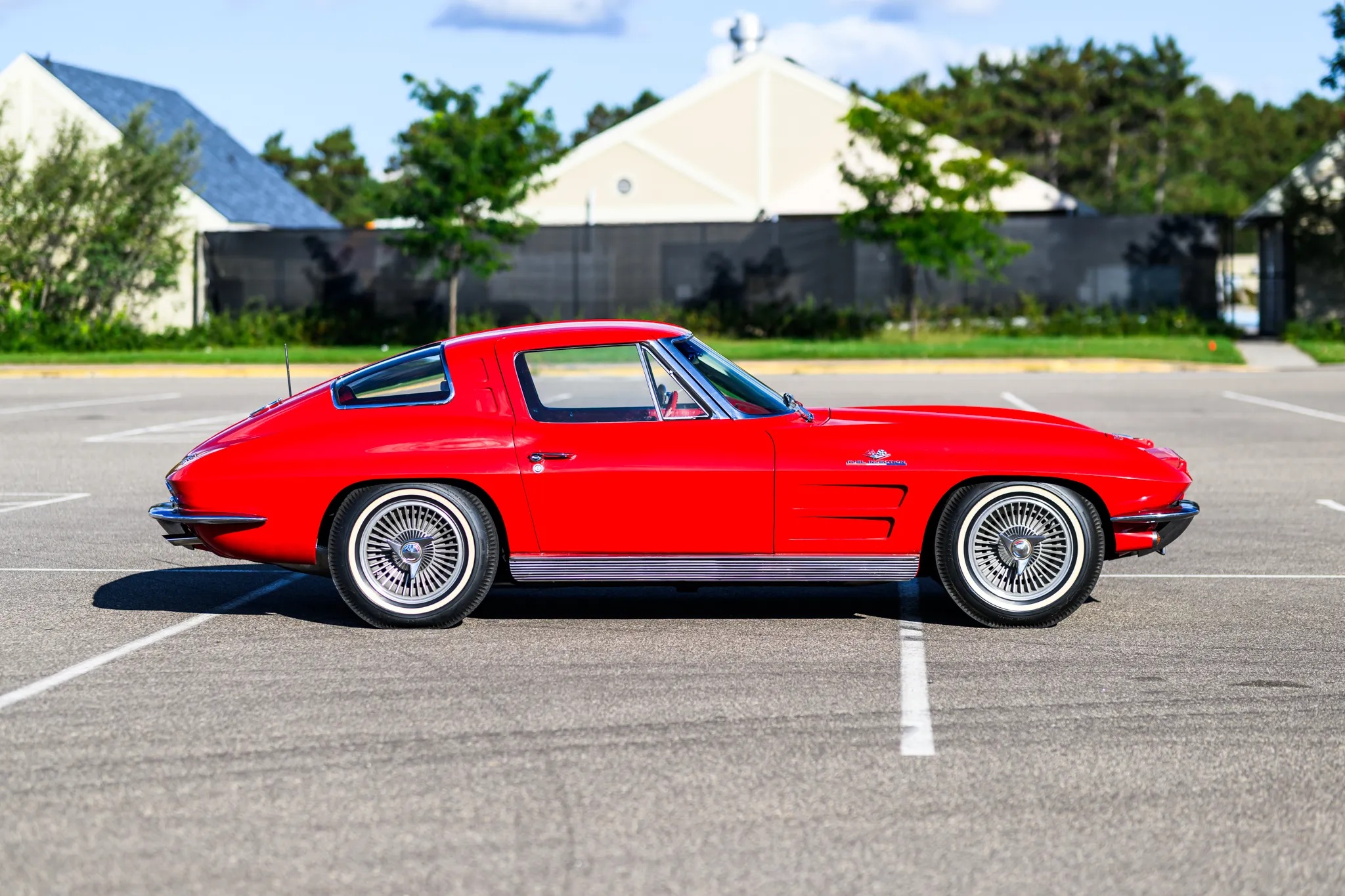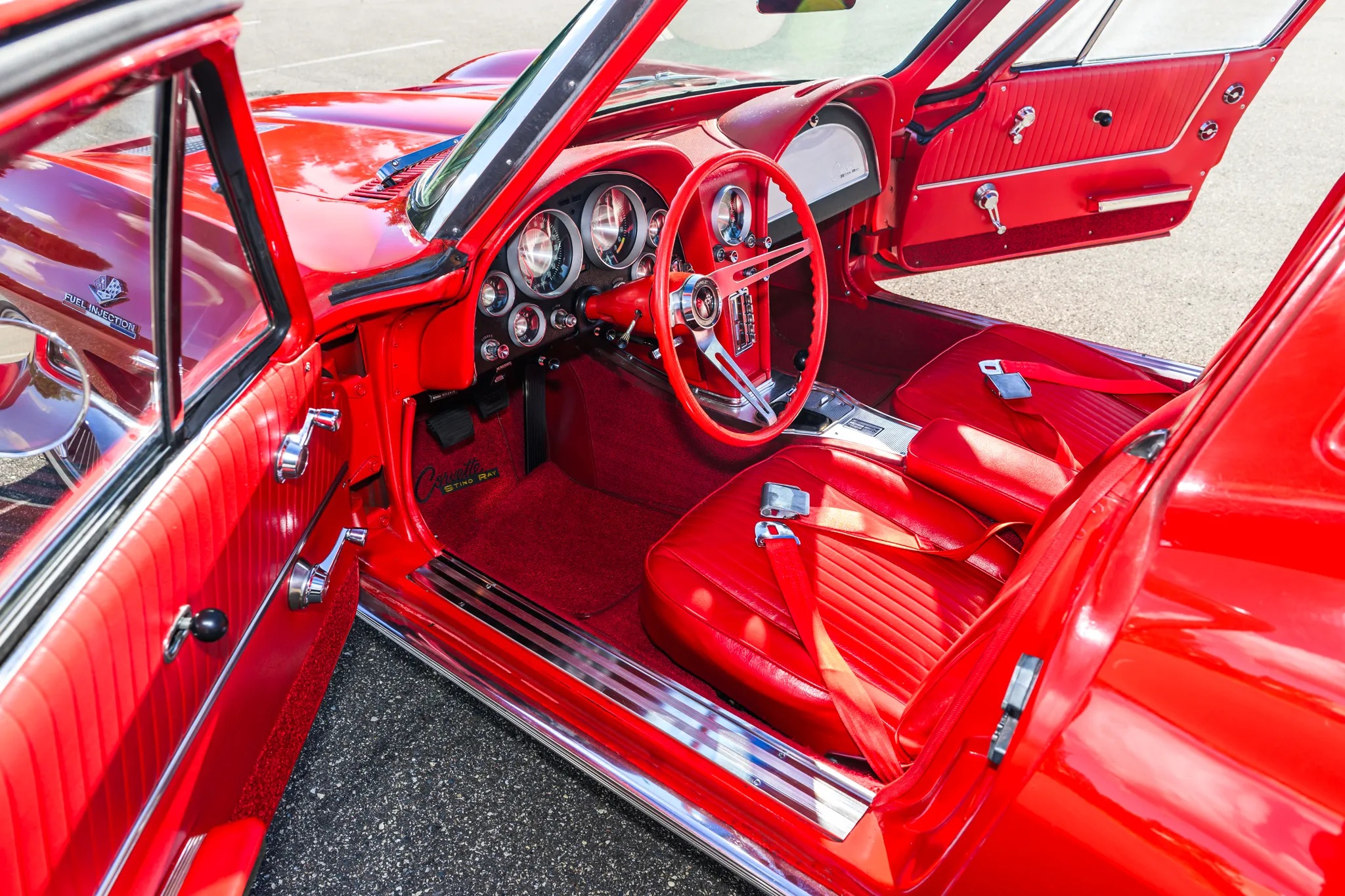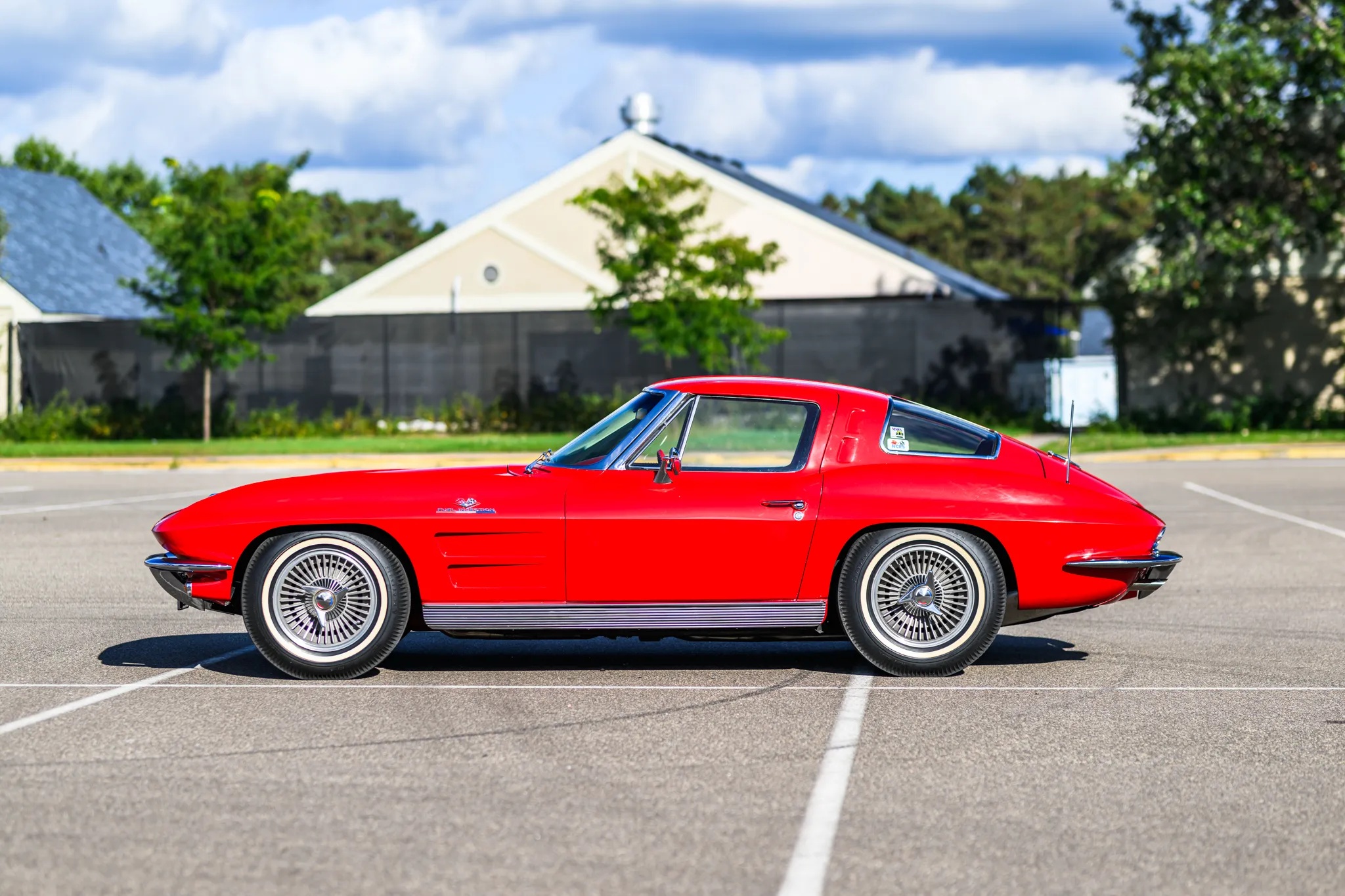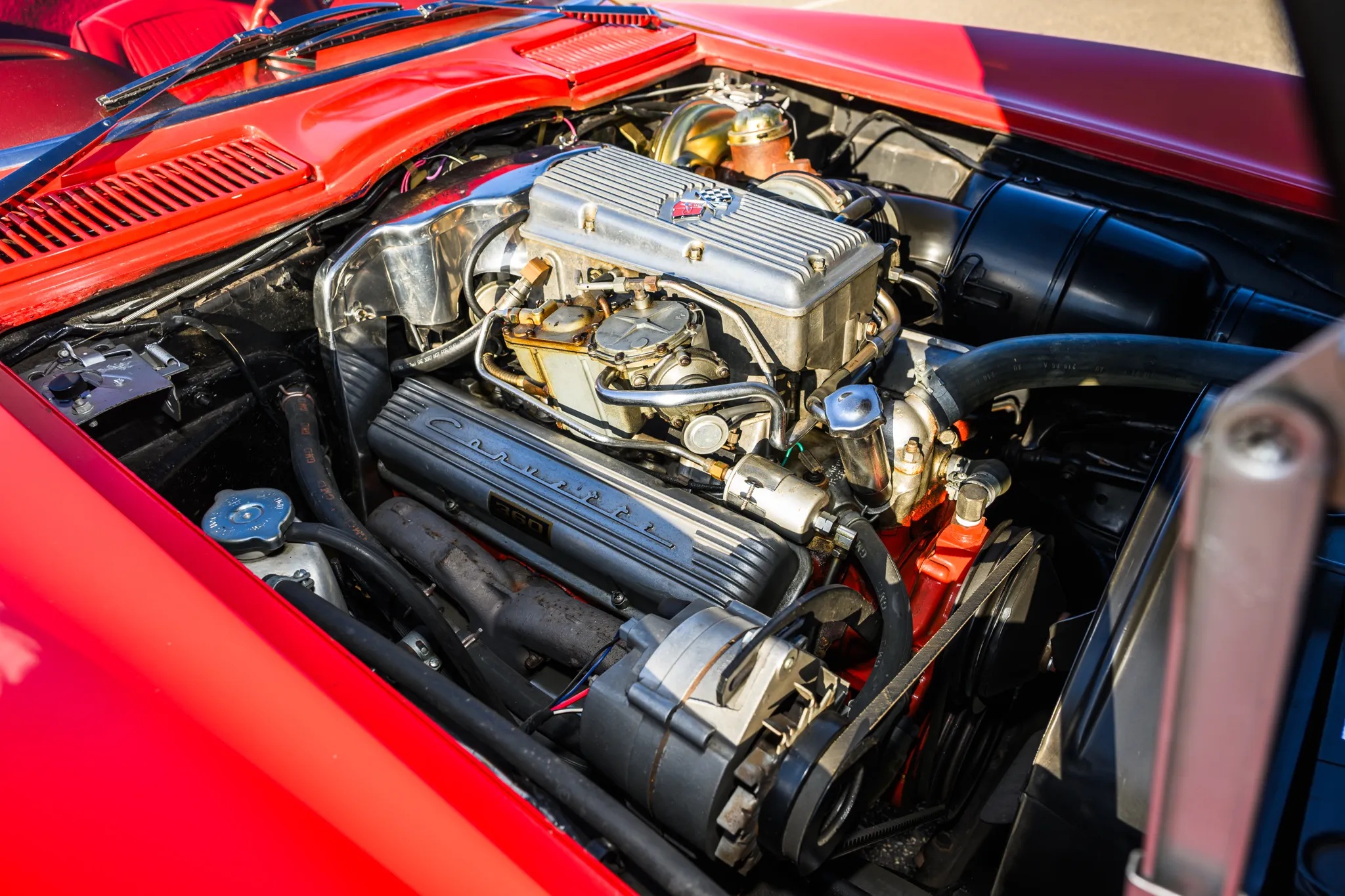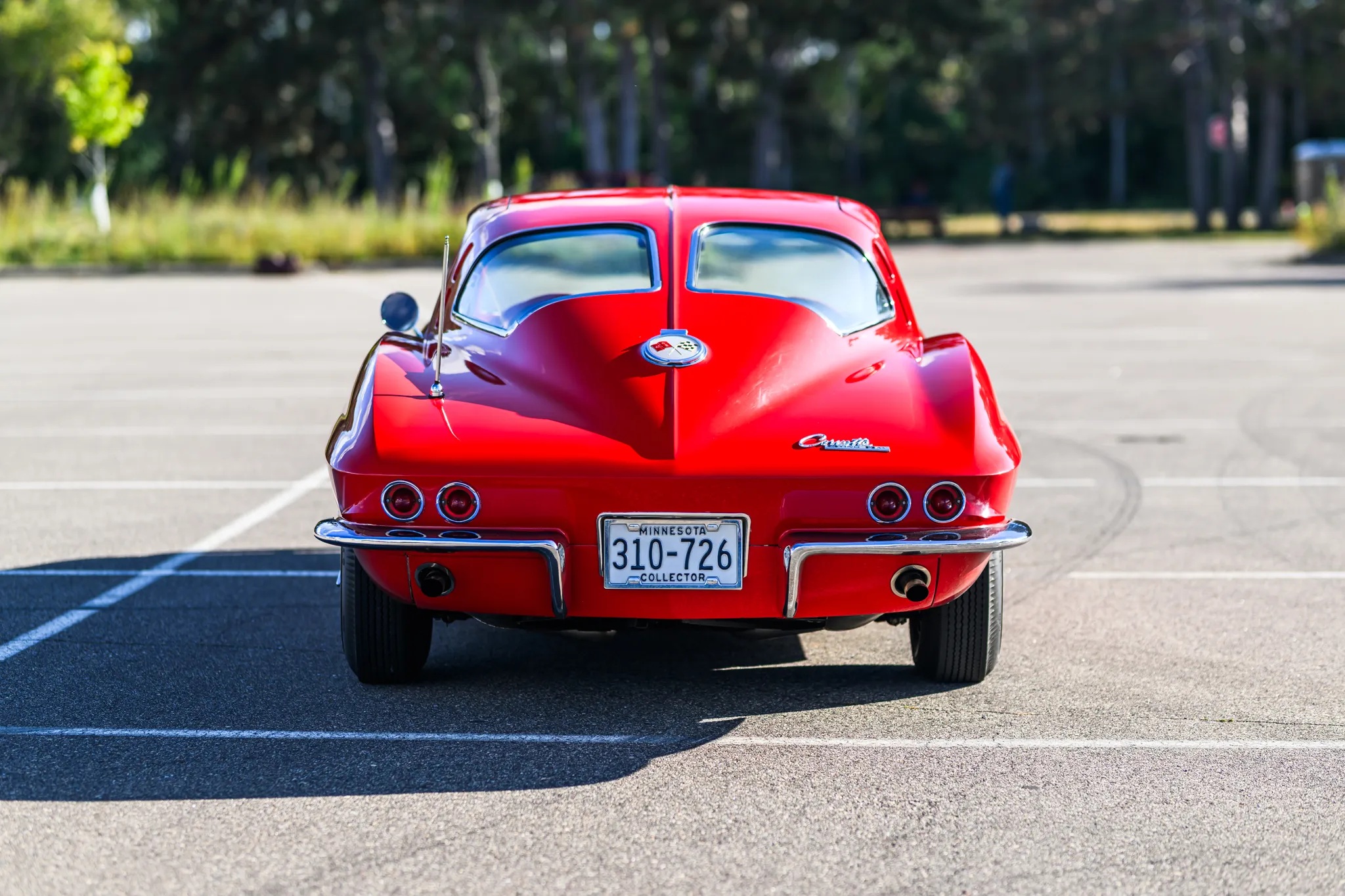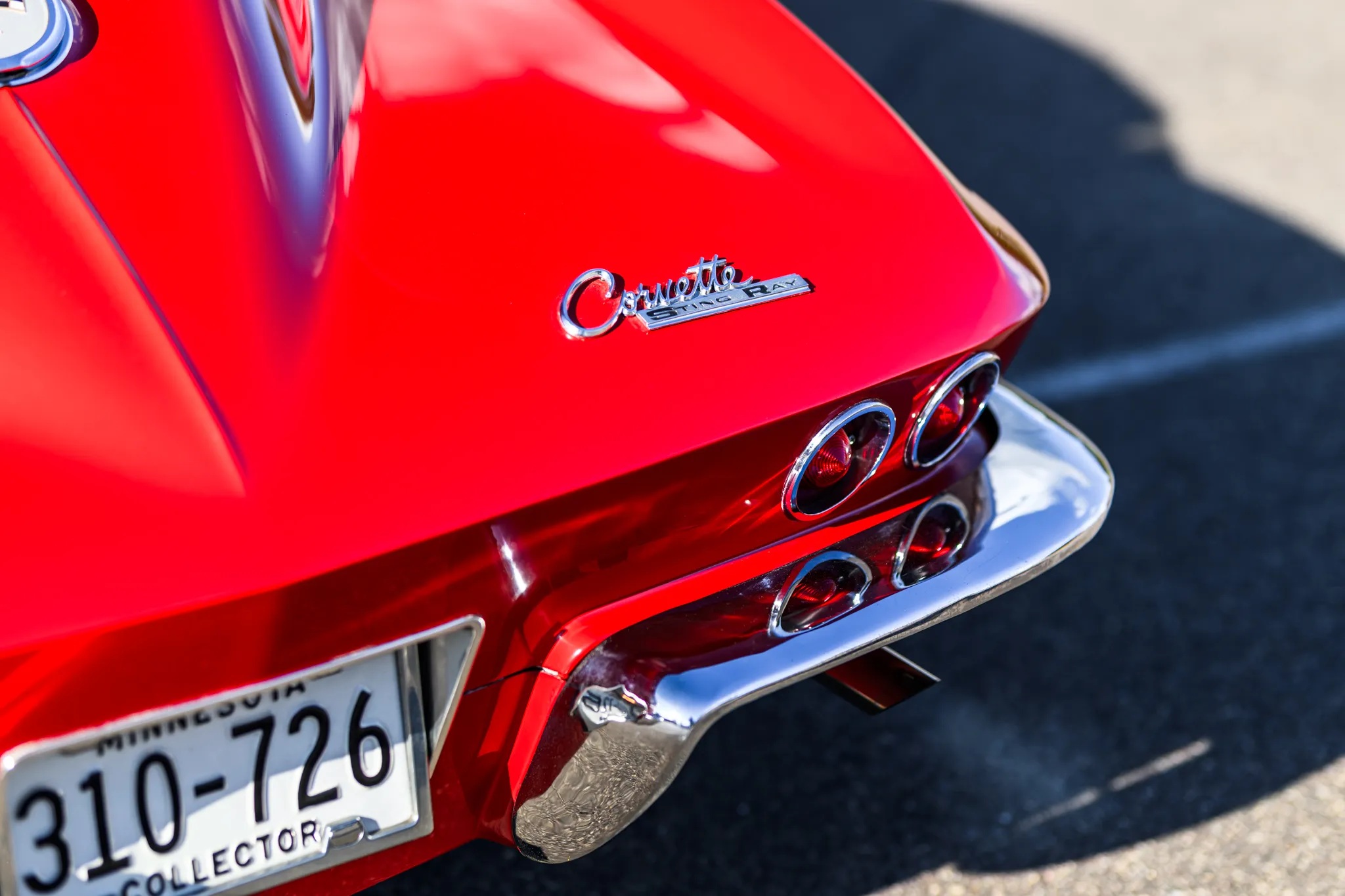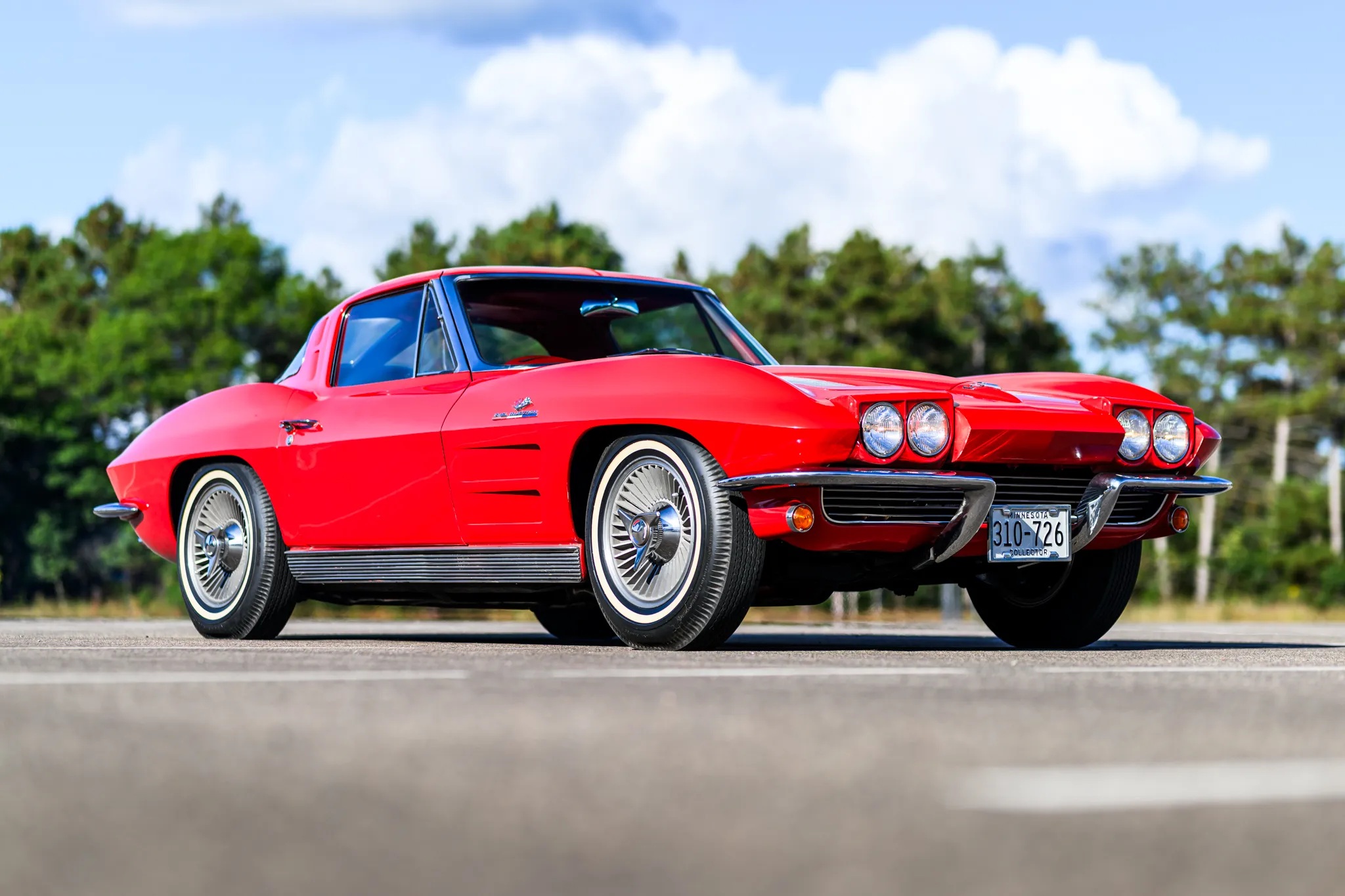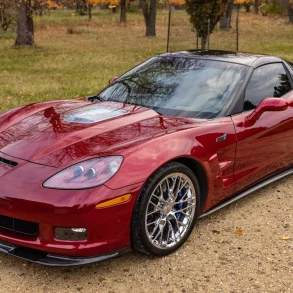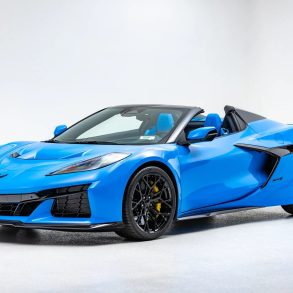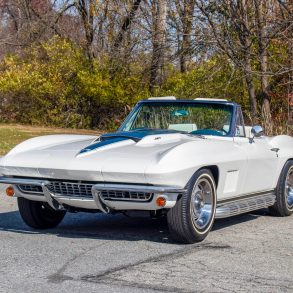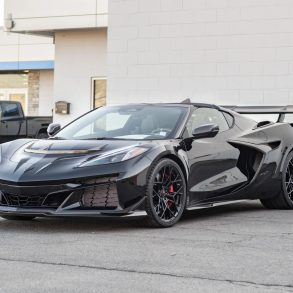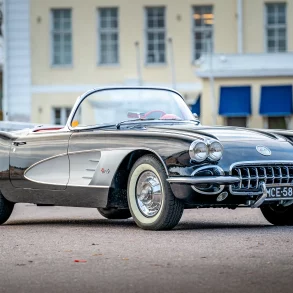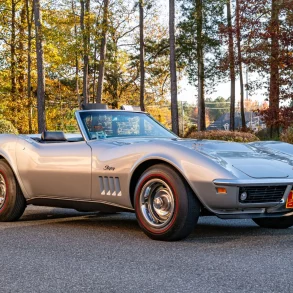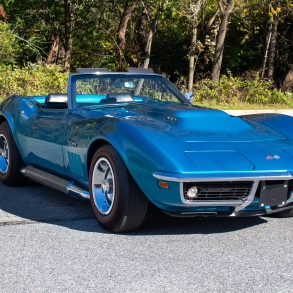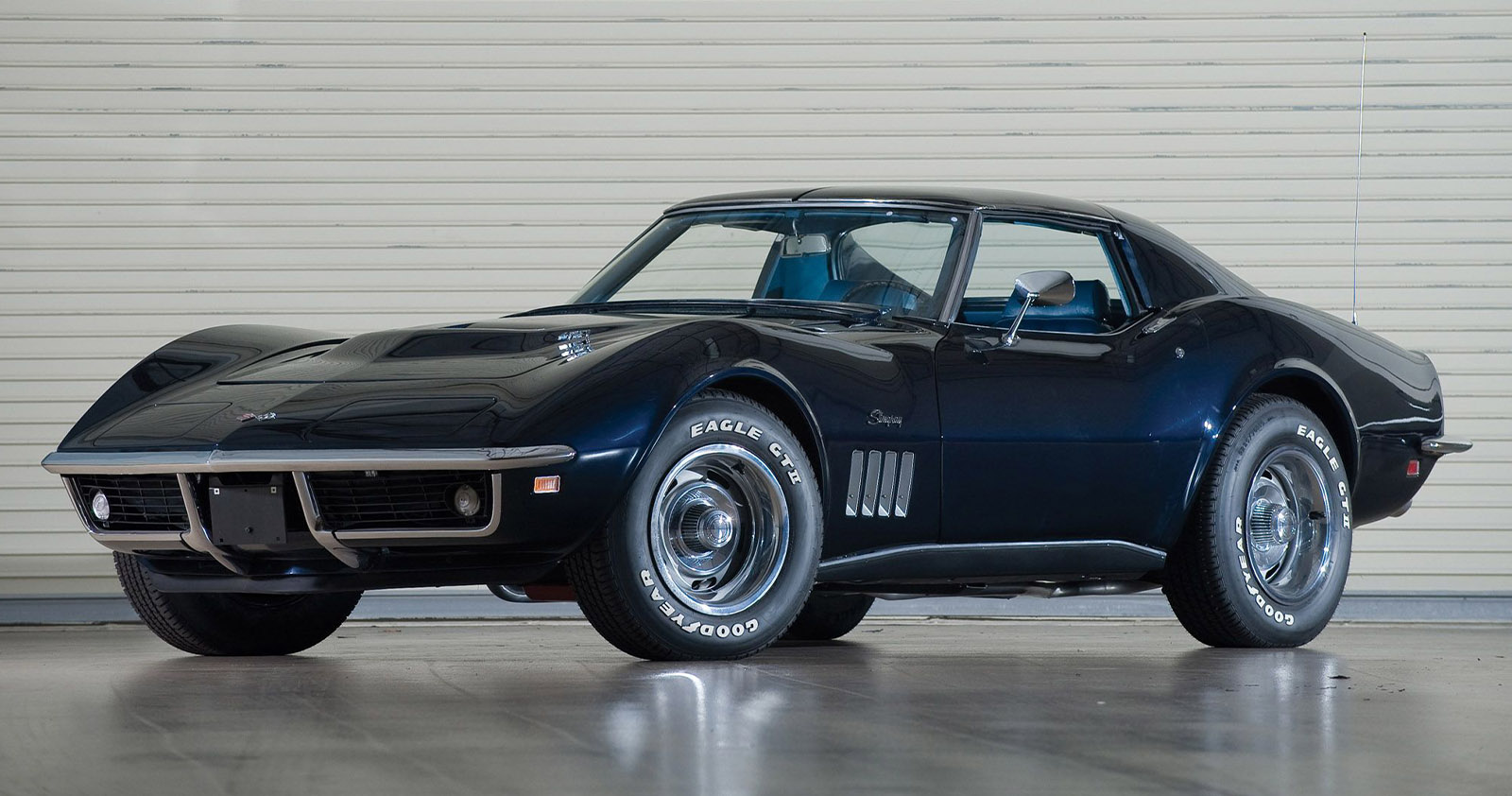Introduced in 1963, the Corvette Sting Ray marked a radical shift in both design and engineering. Its futuristic styling—available in coupe and convertible forms—was the result of the Bill Mitchell-led GM design studio, with contributions from Peter Brock and Larry Shinoda.
Inspired by Mitchell’s privately funded Stingray racer that dominated the 1960 SCCA championship, the 1963–67 Sting Ray remains one of the most celebrated American sports cars ever built. It debuted a fully independent rear suspension, a milestone achievement led by Chief Engineer Zora Arkus-Duntov, and offered a wide range of performance options.
Production for 1963 totaled 10,594 coupes featuring the now-iconic split rear window—a striking yet controversial element that was discontinued after one year, making it highly collectible today. Of the 2,610 fuel-injected Corvettes built that year, roughly 1,300 were split-window coupes, including the example currently listed on Bring a Trailer.
Finished in Riverside Red, it features flip-up headlights, fender vents, chrome accents, quad tail lamps, and dual rear-exit exhaust tips. It rides on turbine-style 15-inch wheels with knock-off spinners wrapped in Firestone Deluxe Champion thin-whitewall tires. Underneath, the car’s independent suspension and power-assisted drum brakes reflect its advanced engineering for the era.
Inside, the red vinyl bucket seats, matching trim, and period details—such as an analog clock, AM/FM Delco radio, and locking glovebox—evoke classic 1960s style. Power comes from the 360-horsepower, fuel-injected 327ci V8 (RPO L84) paired with a four-speed manual transmission.
Source: Bring a Trailer


